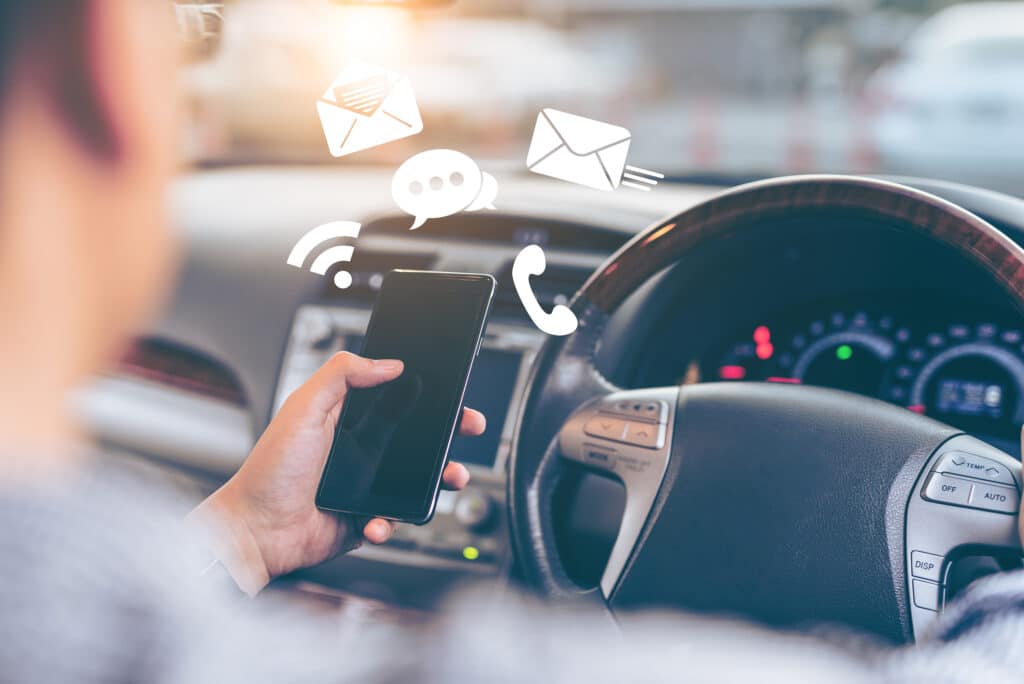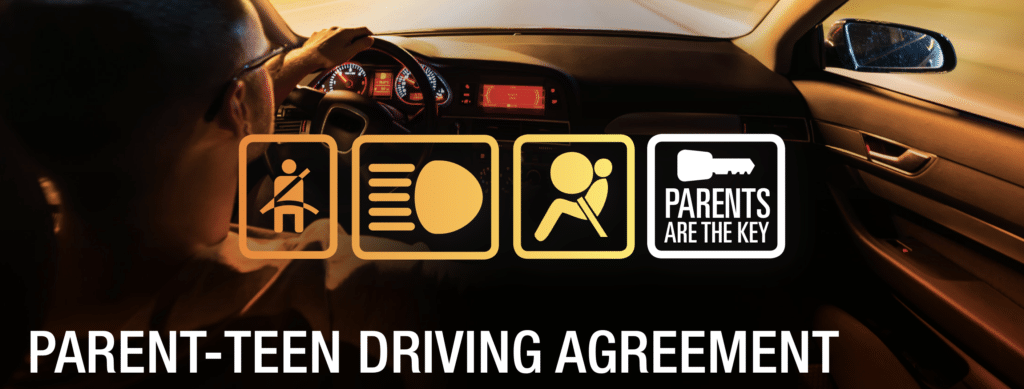A first vehicle is a big deal for every teen—a symbol of maturity and a rite of passage into adulthood. While teens are excited to learn and grow, many parents are nervous about giving them the keys.
Dangers of Texting and Driving
Furthermore, using a phone while driving is directly responsible for 28% of all traffic accidents—about 1.6 million car crashes and thousands of premature deaths every year (Kareklas & Muehling, 2014, p. 223).
About 28% of all traffic accidents (and thousands of fatalities) can be attributed to drivers who are distracted by cell phone use.
—Dr. Ioannis Kareklas, Associate Professor and Chair of Marketing, University at Albany
Teen Texting and Driving Statistics
Cell phone use is a particular problem for young people. As many as one-third of teenage drivers have admitted to texting while driving in the past month (Kareklas & Muehling, 2014, p. 226).
This is part of why car crashes are the number one cause of death for teens in the U.S. Each day about nine teens die, and nearly 1000 are injured in motor vehicle collisions (Yang et al., 2013, p. 334).
In total, there are over 350,000 teens every year who receive medical care after being injured in car crashes (Ramirez et al., 2013, p. 426).

Texting Isn’t the Only Distraction
Texting while driving is just one of the potential cell phone hazards. In fact, some studies indicate that texting and driving are on the decline, being replaced by habits like updating social networks and surfing the web. Push notifications of any type, combined with an urge to respond right away, have revolutionized how we’re distracted by phones.
Smartphones offer plenty of diversions, including movies, music, and social media. (Pamela, 2020, p. 823). Even apps like Google Maps can be problematic if inappropriately used.
The problem extends beyond texting for teens. Any distraction that takes their eyes off the road or their hands off the wheel increases the chances of an accident.
Knowing the Consequences of Texting and Driving Isn’t Enough
Simply knowing the dangers of distracted driving isn’t enough to keep children safe. Studies have repeatedly shown that most teens are already well aware of the dangers of using a cell phone while driving, but they continue to do it anyway (Kareklas & Muehling, 2014; Quisenberry, 2015).
One study found that 76% of teens agreed that if you regularly text while driving, you will be killed while driving. The study also found that 93% of teens agreed that even if you don’t die from using your cell phone while driving, you’ll get into an accident one day (Quisenberry, 2015, p. 304).

Teens know distracted driving is dangerous, but they still do it. So how can parents, educators, and caregivers help adolescents bridge this gap?
Understanding Teen Thinking
While adolescents recognize what might happen when they drive with distractions, they don’t think it will happen to them at that exact moment.
This thought process stems from several beliefs. Some teens rationalize that infrequent phone use at the wheel is unlikely to produce an accident (Pamela, 2020, p. 840). Others believe that it’s okay to use their phones if they only look away from the road for “a split second” (Copeland, 2010).
Still, more teens feel insulated from accidents because they use newer, safer technology—not realizing that even safe technology will always be distracting. Using these technologies while driving is likely to result in serious and tragic consequences (Tian & Robinson, 2017, p. 1074).
In many cases, teens are simply overestimating their driving skills, unaware that even experienced and skillful drivers are more likely to get into accidents when using a cell phone (Kareklas & Muehling, 2014, p. 229).
Solutions to Texting and Driving
Parents play a primary role in helping adolescents establish safe driving habits while overcoming negative ones (Yang et al., 2013, p. 334). There are lots of ways parents can do this.
Perhaps most importantly, we can have regular conversations with our children about the importance of driving safely. Beyond just talking, we can also curb distracted driving by joining together to:
- Model and notice responsible motor skills
- Talk about our own driving decisions in real-time
- Create a safe driving contract
- Establish a pre-ignition routine
- Use tech to fight tech

Model and notice responsible motor skills
Kids quickly notice discrepancies between what adults say and what we do. It’s no surprise that there is a connection between teen driving habits and what they notice about our own inattention at the wheel (Pamela, 2020, p. 825). How we drive is a predictor of how they will drive.
If we stay off our phones and show patience with other drivers, our kids are more likely to follow suit.
Talk about our own driving decisions in real-time
Safe driving is most effective when parents communicate about what they are doing (Ramirez, 2013, p. 430). Share your thinking process aloud by verbally pointing out when you check your blind spot, pause at an intersection, and notice the unsafe habits of motorists around you. When we do glance at our phones, even for a “split second”, we have a chance to recognize we made a poor choice and talk with our kids about how powerful the ding of a notification can be.
Create a safe driving contract
Using the advice of the American Academy of Pediatrics, consider creating a written agreement with your child that outlines the rules and expectations you both have for safe driving (Ginsburg, 2009, 1046). Using this contract to set clear, precise expectations of each other is more effective than a parting “Drive safely!” (Peek-Asa et al., 2014, p. 778)
You can find a driving contract example here.

Establish a pre-ignition routine
Proper preparation can prevent distracted driving. We can be distracted by taking off a jacket, checking our phone, searching for the music we want, or typing an address into our map.
We can model the routine, coach our teen drivers through it, and talk about how distracting those things can be once they are on the road. Be goofy and pretend you’re the co-pilot who ensures all systems are go for a smooth ride!
Pre-ignition Checklist Example
Use tech to fight tech
Some apps allow drivers to lock their phones or block notifications while driving to avoid being tempted. LifeSaver, TrueMotion Family, and AT&T DriveMode are free on the app store and can be a positive way to use tech to minimize distractions.

